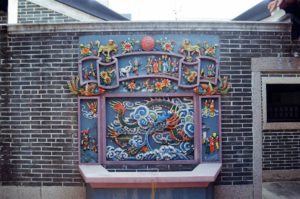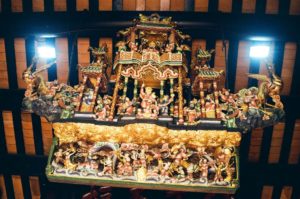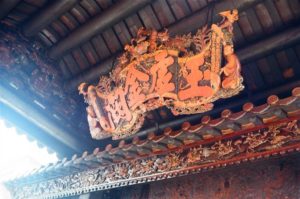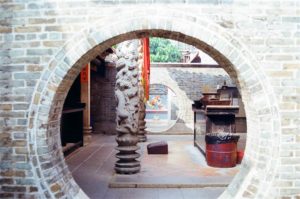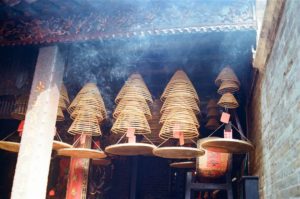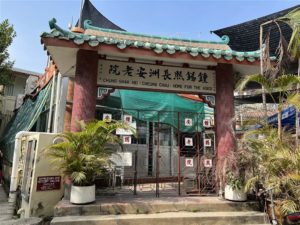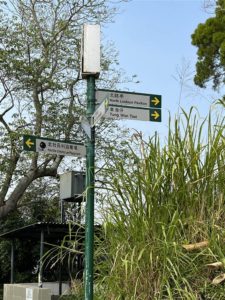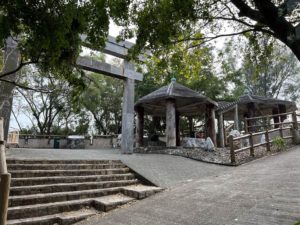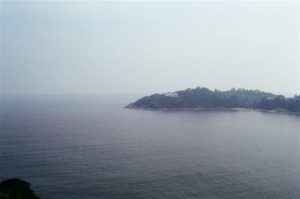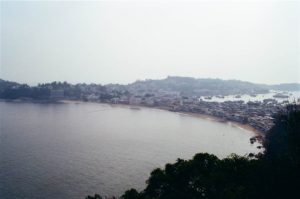A Walk in Cheung Chau North
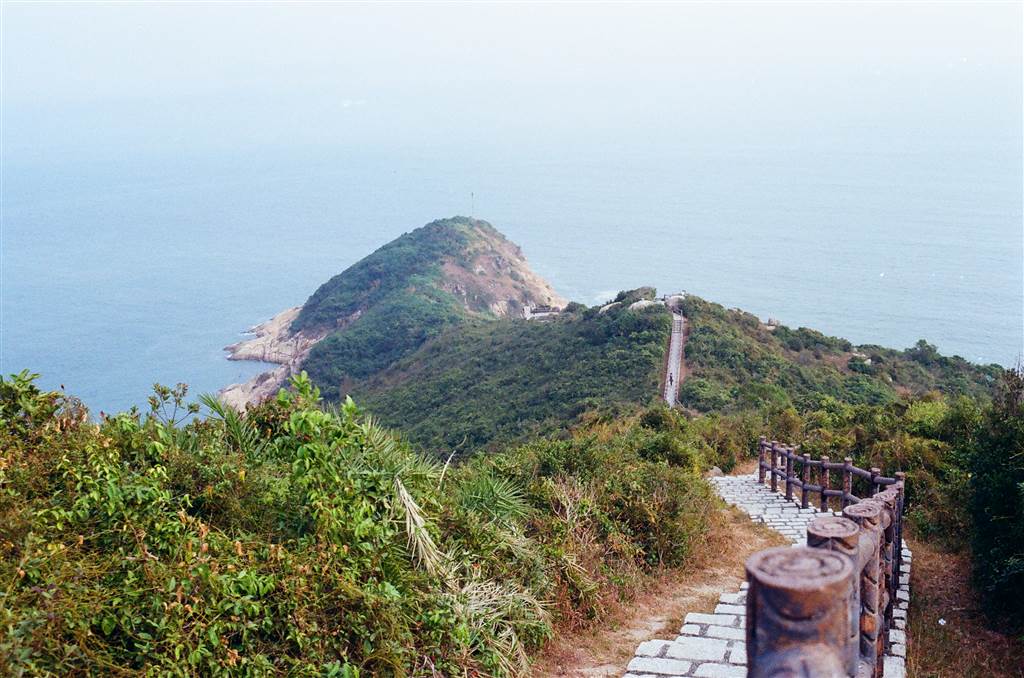
My friend and I love excursions in the islands of Hong Kong. We have been to the Kwun Yam Wan Beach and the Mini-Great Wall Trail in southeastern Cheung Chau. This time we opted for open views in north Cheung Chau.
Despite the myriad choices available, we had some trouble locating the right place for lunch. We settled on the Eggenburg. It is a B&B establishment and the restaurant offers both indoor and outdoor seating. We had our bowl noodles there, with coffee to finish. Then we walked back to the pier area on the Pak She Praya Road and headed toward Cheung Chau north.
We were looking to walk up the North Lookout Pavilion.
The Pak Tai Temple of Cheung Chau
We arrived first at the Pak Tai Temple of Cheung Chau and stopped for a visit. The Pak Tai Temple of Cheung Chau is the largest Pak Tai Temple in Hong Kong. It was built during the 48th year of the Qianlong Reign (1783).
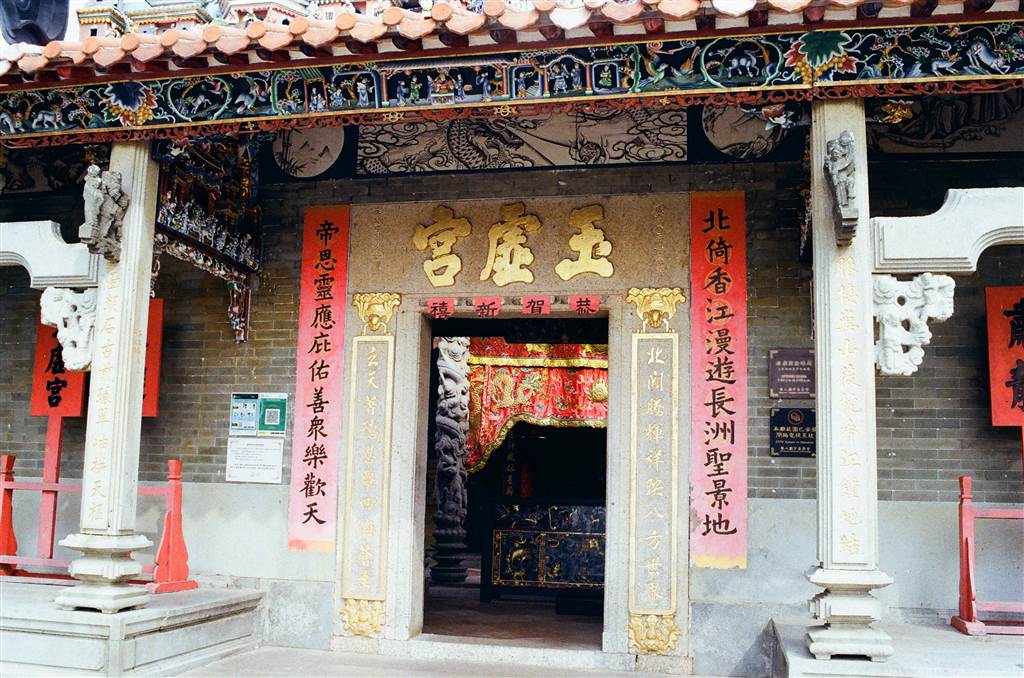
During the Qing Dynasty, Cheung Chau residents were mostly the fishermen of Huizhou, Chaozhou and Guangzhou. In the 42nd year of the Qianlong Reign (1777), an epidemic broke out in Cheung Chau. The residents invited the Pak Tai of Huiyang County to come and suppress the epidemic. It was believed that the island then enjoyed years of stability after. In 1783, Lam Yap-mo led the residents in the effort to fundraise for the construction of this temple to commemorate this experience.
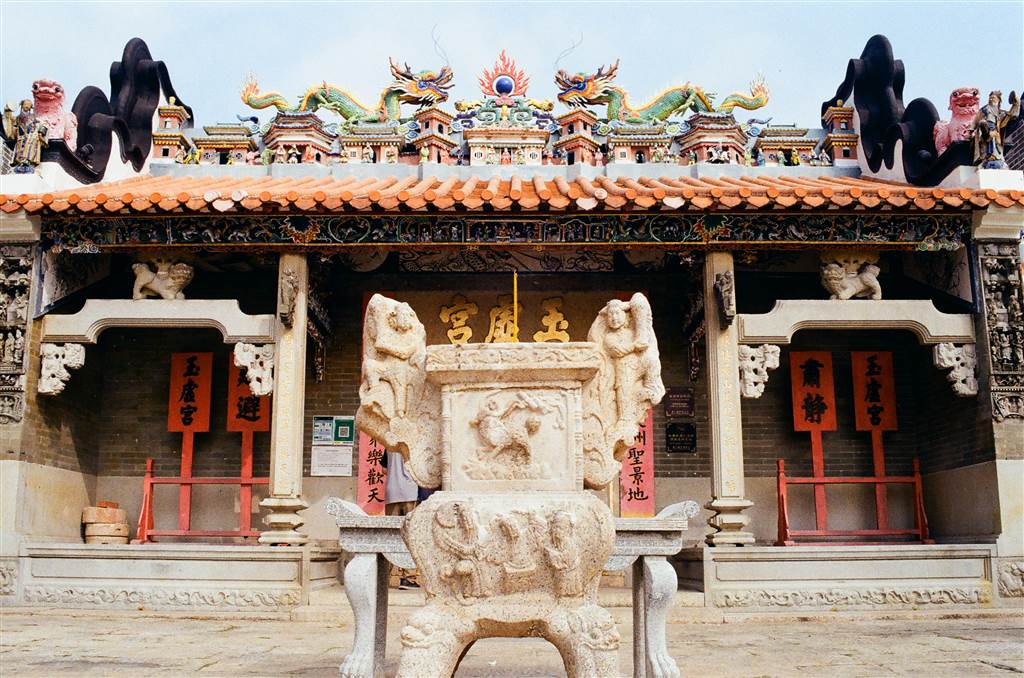
Pak Tai is the deity for the sea. He was the resident deity from the north, but because the waters flow from the north to the south, the southern people believe that he protects them from water-related disasters. According to the source I found, the origin of Pak Tai worship was astral worship. But it eventually evolved, with personalization of Pak Tai becoming the object of worship. As a folkloric figure, Pak Tai was believed to be a royalty that reached nirvana after long years of monkhood. The king then gave him the northern land to guard.
There are three halls in the main axis of the temple with two rows on the side columns. There is a courtyard at the back of the temple as well. The temple is indeed more elaborate than other old temples of Hong Kong. There are many beautiful features inside the temple, including plaques, incense burners and arched gateways. The temple undertook the last restoration in 2003.
My friend, who wanted to burn incense, told me that the temple asked for quite a bit of money for a simple act of incense-serving. I did observe that the temple is a busy one. In Chinese, when we say “prime incense-burning,” that means the temple has many dedicated attendants. This certainly was one.
Finally, one would not miss the significance of Pak Tai Temple in the famous Cheung Chau Jiao Festival, the best-known feature of which are the parade and the bun grabbing contest. Needless to say, the Pak Tai Temple is a significant part of the festivities for Buddha’s Birthday. Part of the Jiao events take place at the plaza of Pak Tai Temple here.
The Trail
We exited the temple and went around to the back. We passed by the Chung Shak Hei (Cheung Chau) Home for the Aged. On a gentle incline we walked on the Cheung Chau Family Walk to reach the Pak She Cheung Lee Park.
Photos: The Chung Shak Hei (Cheung Chau) Home for the Aged, where the trail begins.
Right photo: reaching the Pak She Cheung Lee Park.
We followed the signs for the North Lookout Pavilion. Soon, we saw a park kind of place, with some sort of a gate. We went through that park and at its end there are stairs that will lead you to the North Lookout Pavilion.
Photos: follow the sign for the North Lookout Pavilion. You will then see a park (middle photo). Go through the park and you will see the path that leads you to the North Lookout Pavilion (right photo).
If you follow this trail as we did, the North Pavilion Lookout shall not be the final stop. It lies at the first third of the way between Cheung Chau proper and Tung Wan Tsai (Coral Beach). In fact, the most scenic part of the trail begins at the North Lookout Pavilion, which is the highest point on this trail.
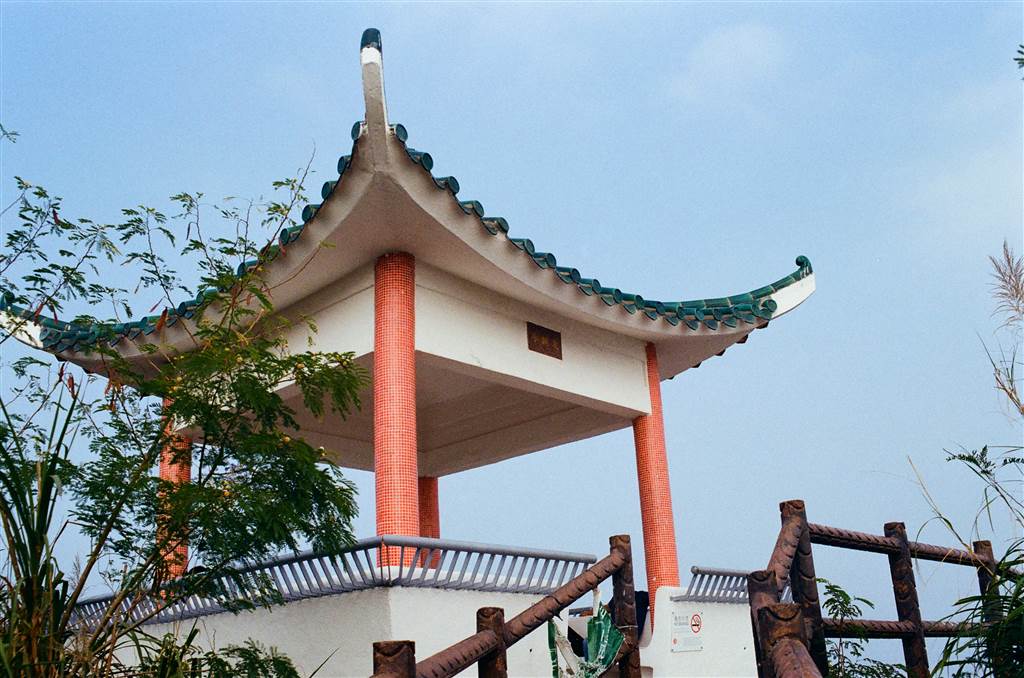
The steps are downward from the North Lookout Pavilion but the path presents open views of Tung Wan Tsai, an unpopulated small but pristine beach, on the northeastern tip of Cheung Chau.
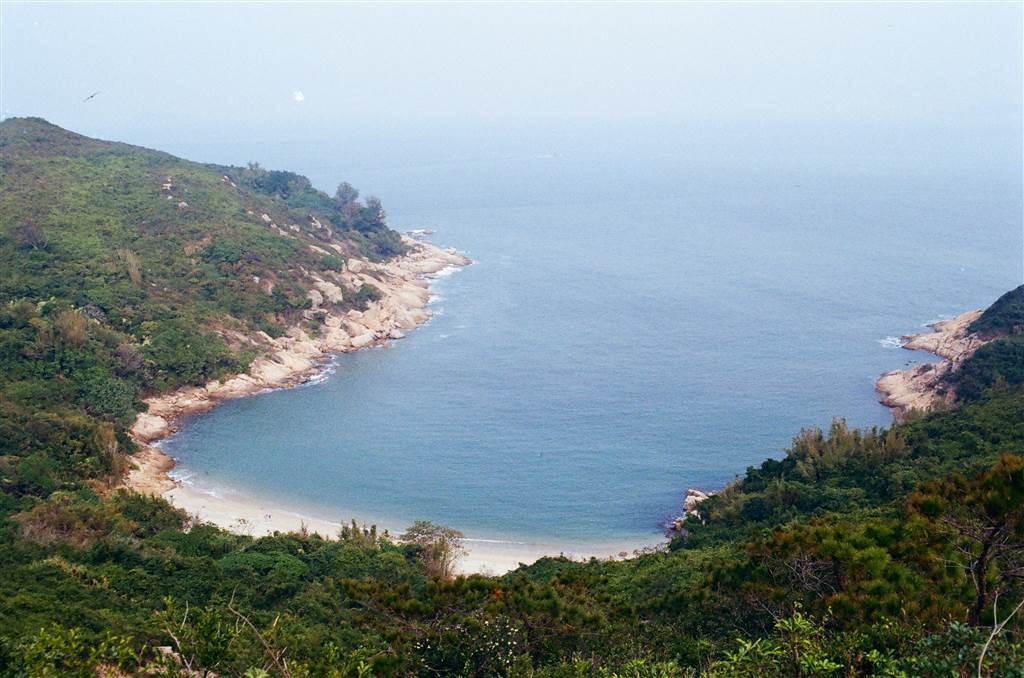
Looking further on, the establishments on the Cheung Chau tombolo along Tung Wan on the east are also exceptional. The Kwun Yam Wan and its beach are also within sight.
Photos: panorama views of the Cheung Chau Tombolo in the east.
Views of Cheung Chau’s northern coast are beautiful.
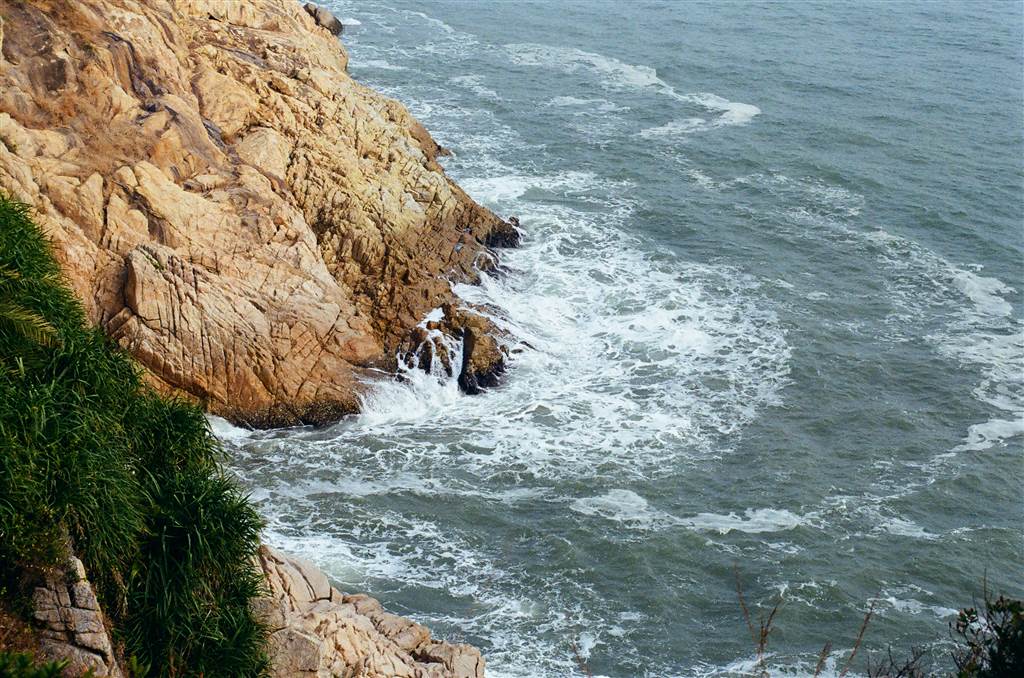
We walked down to Tung Wan Tsai and stopped only briefly because the air was very chilly there.
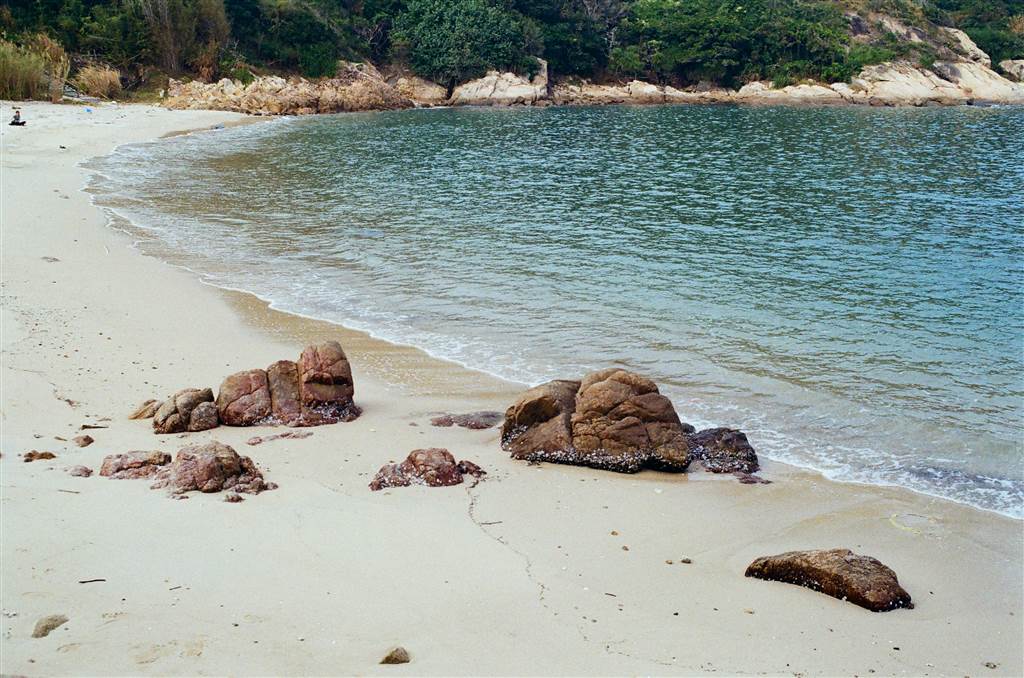
Then we came back up on the same trail and exited on Cheung Chau Family Walk with the Civil Aviation Department facility on our right.
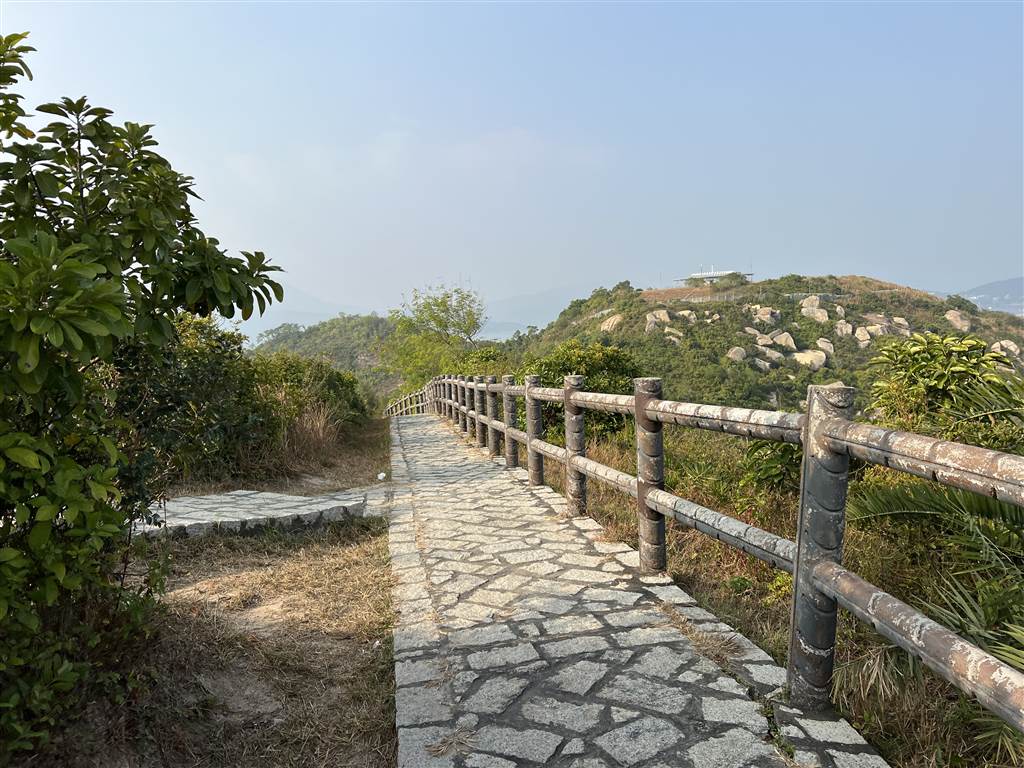
Once we were back on ground level, we passed by the beautiful, again unpopulated Siu Kwai Wan Beach.
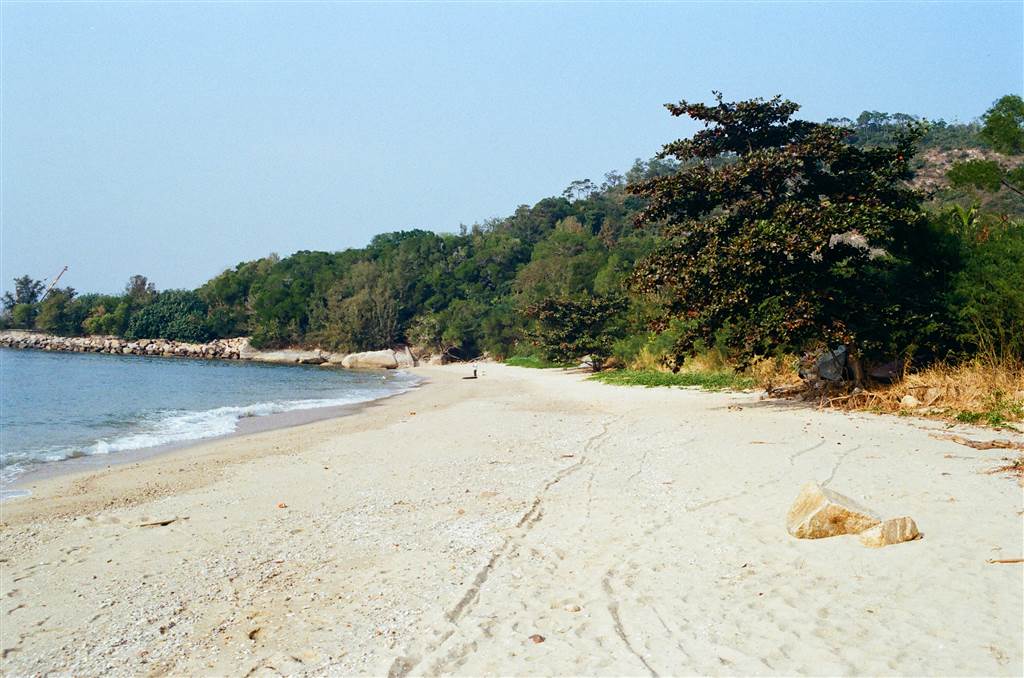
Again, we only spent a few minutes there because it was cold. We were also on our way to get our treat at a waterfront café.
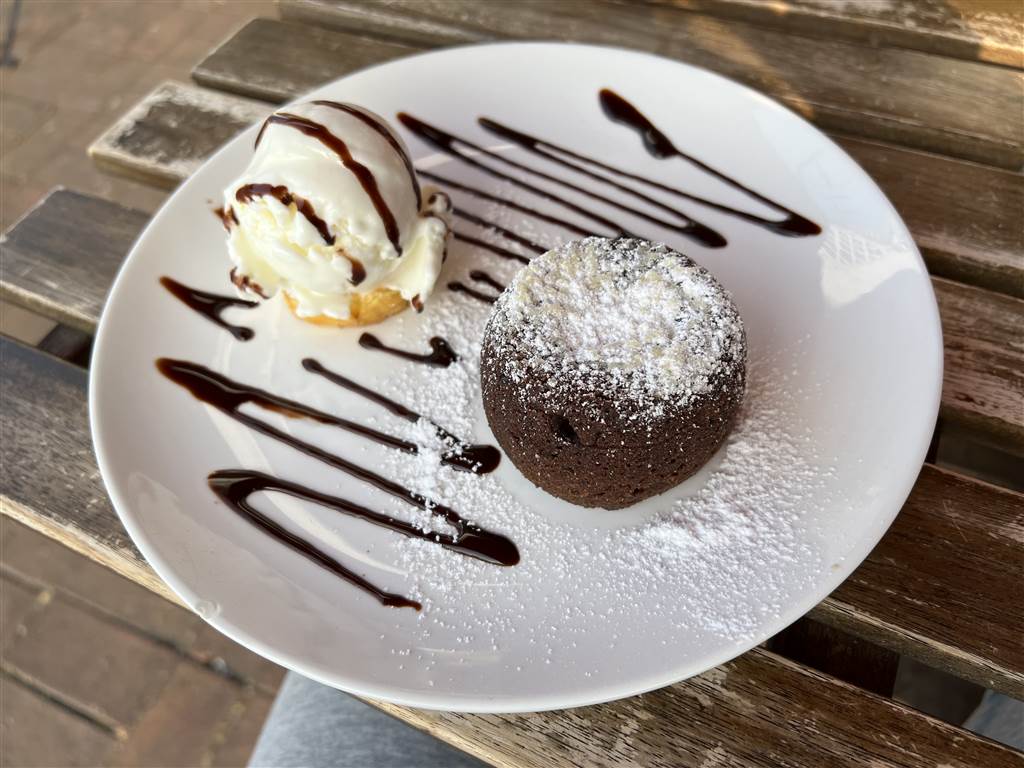
On this trail we really took our time so maybe we spent two hours. Any excursion in the outlaying islands is a whole-day affair, we were in Cheung from before noon and we left on the 5:45 ferry back to Central. It was a wonderful and relaxing day.
How to Get There
At Central Pier No. 5, take the ferry to Cheung Chau. See schedule here.
Sources
Chinese Temples Committee on Pak Tai Temple.

